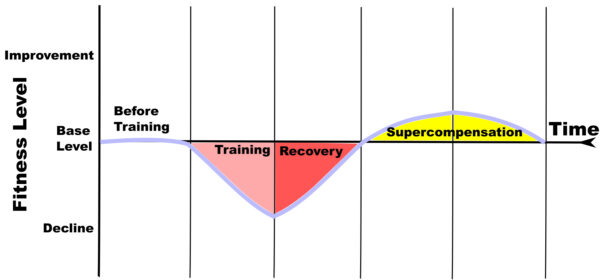Marathon training progress isn’t just about miles—it’s about growth, grit, and smart choices. Over the years, I’ve found that real progress comes from understanding how our body adapts. In this post, I’ll guide you through 10 powerful ways to improve your marathon training. From long runs to lactate thresholds, I’ll share what works, why it matters, and how you can build a personal plan that fits you. Ready to unlock your next level?

🧠Energy Combustion: Fuel Your Fire
To make real marathon progress, you need to understand how your body burns energy. When we run, our body switch between burning carbohydrates and fat. In my early training days, I didn’t pay much attention to this—and I hit the wall from time to time. Over time, I learned how proper fueling made all the difference.
Once I discovered how critical it was to teach my body to tap into fat stores during longer runs, everything changed. I started training in a more fasted state during easy runs and incorporated specific fueling strategies into my long runs. This didn’t just enhance my physical performance—it gave me peace of mind knowing I was becoming more efficient every week.
Energy combustion also plays a role in how you pace your runs. By understanding when your body shifts between energy systems, you can manage your output and avoid burnout in races. Monitoring this and staying consistent will bring long-term gains.
Tip: Long runs teach your body to use fat more efficiently. Fuel right and train smart.
🥖Carbohydrate & Fat Balance
During longer efforts, your body relies more on fat, but carbs remain your high-octane fuel. I used to carb-load the night before races, not realizing consistent fueling throughout training was even more effective.
I now integrate a more balanced approach. This includes strategic carb timing around key workouts and focusing on nutrient-dense meals that combine complex carbs, healthy fats, and lean proteins. Understanding when to fuel and what to eat has helped me prevent energy crashes mid-run.
Over time, I noticed that my recovery also improved. My muscles didn’t feel as sore, and I could bounce back faster. Balancing these two key fuels isn’t just for race day—it’s for every training session leading up to it.

Tip: Weekly long runs and proper recovery meals help develop fat-burning and carb-sparing efficiency.
🌬️Oxygen System & VO2 Max
The cardiovascular system is the engine behind endurance. I noticed great gains once I introduced consistent aerobic training zones (Zone 2).
I used to train too intensively on most of my runs. My ego always wanted to see a faster pace. But slowing down and running more in aerobic zones had a dramatic impact on my fitness. My breathing became more efficient, and I could hold a steady pace for longer.
Improving VO2 max isn’t just about speed—it’s about allowing your heart and lungs to work together efficiently. Including strides, fartlek, or hill sprints once a week in addition to aerobic runs can boost your oxygen capacity even more.
Tip: Run at a pace where you can hold a conversation. This enhances oxygen efficiency and long-term progress.
📈Utilization Rate: Maximize What You’ve Got
Your utilization rate determines how much of your aerobic capacity you can actually use. With time and training, I learned that pushing my LT higher let me run faster without becoming fatigued.
I was a little amazed when I realized I could maintain paces that once felt like tough efforts. This didn’t happen overnight. It came from consistent threshold training, learning to train right below my tipping point, and fine-tuning my running economy. It’s a fine line, but one that opens the door to real speed.
This principle reminds me that more isn’t always better. Training smarter—not just harder—can unlock surprising performance improvements. It’s all about building that bridge between potential and execution.
Tip: LT training helps you push your limits—without tipping over.
🏃♀️Endurance: The Foundation of Everything
There’s no shortcut to endurance. I still remember the emotional high of my first uninterrupted 2-hour long run. It built more than fitness—it built confidence.
Endurance training isn’t just a physical feat—it becomes a mental journey too.
You face your inner thoughts, discover your thresholds, and redefine your limits. Each week, I added a little more distance, and I also added a little more belief in myself. That belief carried me through tough moments I hit and every mile I doubted.
Progress in endurance comes from patience. It’s about showing up consistently, even on the days when your legs feel heavy or the weather isn’t ideal. Each long run is a silent promise to yourself that you’re capable of more. And when you finally reach race day, those miles are what carry you to the finish.

Tip: Build gradually. Endurance comes from time on your feet, not speed.
🔬Lactate Threshold (LT): Faster Without Burnout
LT training changed the game for me. It helped me run faster with less fatigue. These sessions are tough but rewarding.
I used to dread threshold runs, but now I welcome them as a test of control and resilience. It’s not about running your hardest—it’s about finding that fine edge where you’re working just below your tipping point. That’s where growth lives. LT training often executes as interval training.
As I introduced hill repeats and tempo intervals, I noticed something incredible: my “comfort pace” got faster. Training near the LT teaches your body to clear lactate more efficiently, which means you can go longer at higher speeds. It’s not easy, but it pays off.

Tip: Start with tempo runs just under threshold. Add intervals or hill sessions gradually as the runner above.
⚙️Running Economy: Get More from Every Stride
Running economy is how efficiently you use energy. I fine-tuned mine through drills, form checks, and strength training.
I started recording myself running and was surprised by how much room there was to improve. Small changes—like a more upright posture or a quicker cadence—had a huge impact. Adding short strides, single-leg drills, and stability work helped smooth out my form.
Improving running economy isn’t glamorous, but it’s what gives you that effortless feeling during a race. It’s the secret sauce behind strong finishes and consistent pacing.
Tip: Add strides and drills once or twice a week. Small changes lead to big gains.
💧Fluid Balance: Hydration Wins Races
I’ve bonked from dehydration more than once. Learning how to hydrate properly made my training and races feel smoother.
Hydration isn’t just about drinking water—it’s about timing, electrolytes, and learning your body’s needs. I once went through a hot training cycle and didn’t adjust my intake, which led to cramps and poor performance. Since then, I always test hydration strategies during long runs.
Now, I carry electrolyte mixes, monitor sweat rate, and plan my intake like I plan my workouts. On race day, this means no surprises. Just confidence.

Tip: Don’t wait until you’re thirsty. Practice hydration during your long runs.
🛌Recovery: Where the Magic Happens
It took me years to learn that rest isn’t laziness—it’s where your body adapts. Now I plan my recovery days as carefully as my workouts.
After pushing through injuries and burnout in the past, I learned to listen. Rest days are when your muscles rebuild, your nervous system resets, and your motivation renews. Skipping rest is like planting seeds and forgetting to water them.
Recovery includes sleep, nutrition, massage, and even mindset. I’ve made it a non-negotiable in my plan—and I run better because of it.
Tip: Sleep, nutrition, and gentle movement are recovery gold. Skipping recovery sabotages your fitness gains.
🔄Supercompensation: The Growth Cycle
Supercompensation is the beautiful moment when your body rebounds stronger after training. Get this rhythm right, and you’ll make real gains.
When I first learned about this concept, it clicked—progress happens after the workout, not during. This changed how I viewed my weekly schedule. Now, I build in space for my body to absorb the work. When I return, I feel stronger, not just tired.
Understanding supercompensation allows you to train in cycles—stress, recover, adapt. It’s the rhythm of high-performance training, and when it flows, it feels like magic.

This concept underlies every effective marathon training plan. Time your sessions right—and you’ll build strength, endurance, and resilience with each cycle.
Tip: Train, recover, and trust the process. Patience equals progress.
🏁Final Thoughts: Progress Is a Journey
Marathon training isn’t about perfection—it’s about consistency, curiosity, and self-discovery. Each lesson I’ve shared here came through experience—sometimes joyful, sometimes hard-earned. But every mile taught me something valuable.
When you train with intention, listen to your body, and give yourself grace on tough days, you’re already winning. Don’t just chase progress. Celebrate it. Because becoming a stronger runner isn’t just about a faster finish—it’s about who you become along the way.
Wherever you are on your marathon path, keep going. Keep learning. You’ve got this.
💬 FAQ: Your Marathon Progress Questions Answered
1. How often should I increase my weekly mileage?
A good rule is the 10% rule—don’t increase your weekly volume by more than 10% to avoid injury.
2. What’s the difference between threshold and interval training?
Threshold training hovers near your LT for longer durations; intervals are shorter, high-intensity bursts with rest in between.
3. How do I know if I’m hydrating enough?
Monitor urine color, weigh yourself pre- and post-run, and experiment with electrolytes in training, not just on race day.
4. Can beginners benefit from LT or VO2 Max workouts?
Absolutely—but build a base first. Focus on aerobic endurance, then gradually introduce intensity as your fitness improves.
💡“Marathon progress is built one smart mile at a time—run with heart, fuel with intention, and recover with care.”
If this guide inspired or helped you, consider sharing it with your running buddy or on social media. Every runner’s journey matters—let’s lift each other up. 🧡






Having read a previous post on your site, I read this one with great interest as I fully intend to run a Marathon. I am interested in learning more about Lactate threshold training (LT), although the Long Slow Distance may be more correct for me since I have not been running again for several years and have just started my training a week ago.
I am first planning to run a 5K because there is one in my town in the fall, but my long-term goal is to run a marathon next summer! I know I have a long way to go, but I also feel that your site is helping me make decisions about my training, so thank you very much!
Thank you for the comment. Happy that you can use some of it. By the way I have written a blog about LT -training here:
https://marathontrainingbuddy.com/lactate-threshold/
Be Well
Hello dear thanks for sharing such amazing post marked with brevity expression on the topic marathon training for elite run 1 I never really had much knowledge about The (10 factor who lies behind affective marathon training anyway I am so glad I am seeing and reading this article i have really learnt a lot from in here and am hoping to share this post with like minded people thanks
Hi mondayjosep
Thank you for the comment. Happy that you could learn something from it.
The 10 factor…are representing the menu point “Marathon training basis”
Be Well
hello dear, so thoughtful of you to share such an informative review on marathon training.. I must say that I find this your tips clearly understandable for marathon training and I really can’t wait to dig deep and start utilising them as I look forward to start up my training… thanks a lot for sharing have a great day…
Hi evansese
Thank you for your comment and that you can use some of the post.
Be well
Hello there, This is an amazing article that you have got here. The long slow distance (lsd) is a great way to practice for endurance. It has minimal risk unless to those that are not medically fit. Each time I try to take up my speed level, there is this sharp pain I feel in my chest it is very different from the natural heart pump. Does it mean I can’t do well with improve speed?
Hi Steviejohn41
You can improve speed. But maybe you start out too fast comparing to your current running level. You could Make the speed training with lower intensity and increase over time.